

Suunto Blog
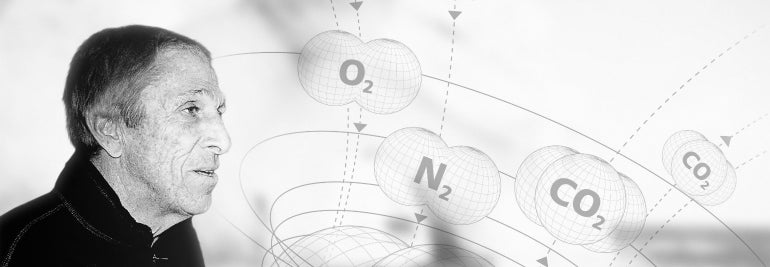
Tribute to Dr Bruce Wienke
It is with great sadness that we announce the news that our beloved Dr Bruce Wienke, a true pioneer in his field of dive specific algorithm design, has passed away leaving behind a great legacy.
A keen diver, and downhill skier, Dr Wienke’s interest in diving was reflected in his achievements, and great success as seen in his accolades. His astonishing CV included Instructor Trainer and Technical Instructor with NAUI, a Master Instructor with PADI, Institute Director for YMCA, and an Instructor Trainer/Technical Instructor for SDI/TDI.
“Most of the diving I have done has always been interesting and exciting. To my Australian friends, diving the Great Barrier Reef was incredible. Another favourite place is diving underneath the Arctic ice. It is just amazing; the water is cold of course, but it is just amazing. It is so clear, and perhaps because of the overhead ice and the associated underwater activity it’s like diving in a three dimensional surrealistic world. It is fantastic, and contrary to what you might think there is a variety of life down there. Very cool.” Dr Bruce Wienke.
Dr Wienke joined Suunto in the late 90’s, where he hit the ground running and didn’t stop. The collaboration arose after some of his diving work published on core screen modelling in the open literature and was noticed by Ari Nikkola who was at the time presiding over the inhouse the algorithm development at Suunto.
Employing his great expertise in the diving specific algorithm field, he joined Ari Nikkola in the development of the revolutionary Reduced Gradient Bubble Model (RGBM).
The RGBM, a name first coined by Dr Wienke, is a dual phase approach to staging diver ascents over an extended range of diving applications (altitude, nonstop, decompression, multiday, repetitive, multilevel, mixed gas, and saturation) and a giant stride forward from previous modified Haldanean decompression models.
Prior to joining the Suunto family, Dr Wienke was a Program Manager in the Nuclear Weapons Technology Simulation and Computing Office at the Los Alamos National Laboratory (LANL) where he completed research up until his death. As head of the LANL Nuclear Counter Measures Dive Team involving Special Warfare Units both above and below the water, he trained alongside the special forces well into his 70s.
His interests were in computational decompression models, gas transport, and phase mechanics. He was the author of five monographs on his field, as well as more than 200 technical journal articles and was an active contributor to underwater symposia, educational publications, technical periodicals and decompression workshops.
Alongside his high achieving work life, he served actively as a consultant for decompression algorithms within the dive industry and he worked with Divers Alert Network, DAN, on applications of high performance computing and communications for diving.
Wienke’s first Suunto dive computer releases were the Vyper and Cobra in 1999, which is still accompanying divers all over the world on their underwater adventures, shortly followed by the iconic, best-selling Suunto Stinger dive computer. With his continued support, Suunto together with Dr Wienke, using his own source code, created the Technical RGBM. Now including helium gas, and rated to a depth of 120m, the Suunto HelO2 and D9tx opened the door to the technical dive market. A major new release in 2012 from Dr Wienke saw the Suunto Fused RGBM which combined the Full RGBM and the Technical model. Greatly benefiting both the recreational and technical diver, the algorithm now supported rebreathers, and new depths were conquered with a 150m rating. The Suunto Fused™ RGBM 2 can be found in the latest releases, the Suunto Eon Series and the D5. The algorithm manages dissolved gas and free-gas in both the tissues and blood of a diver making it significantly smarter than any previous models. Dr Wienke described this algorithm as a supermodel.
Dr Bruce Wienke was a widely regarded and respected figure of the dive industry, and he will be by missed all his Suunto family. He died on Saturday 15th February 2020, and is survived by his wife, Annie.
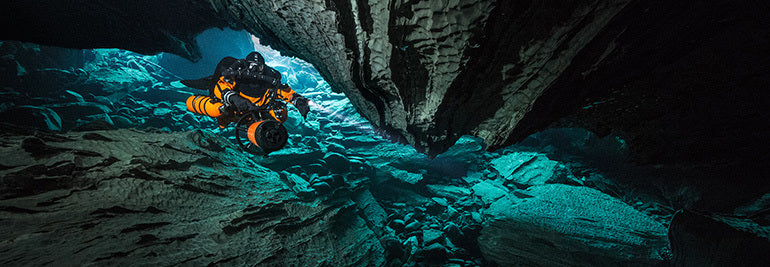
Watch this masterpiece and feel the urge to dive
An explorer alone in a frozen landscape breaks into the ice and descends into a vast, alien underwater world with no light besides what she carries. The eerie atmosphere, the unknown behind the curtain of darkness, the presence of another, all create tension in this film praised as a cinematic masterpiece.
Initially released in 2018, Dive Odyssey, by Finnish filmmaker Janne Kasperi Suhonen, is the story of an explorer and an aquanaut meeting in a mystical underwater labyrinth, hidden from the world by deep snow and frozen ground.
“I often make the analogy between technical diving and space,” says underwater explorer Andy Torbet, who plays the enigmatic aquanaut in the film. “The cold, the darkness, the psychology and the total reliance on your equipment to survive. But more than that you are entering the most alien, other-worldly place in our planet. And if you needed any convincing the aquatic world is one of alien wonder this film does just that.”
Photo by Dive Odyssey.
The film was shot in the old and long abandoned Ojamo limestone mine near the city of Lohja, 60 km from Helsinki. It’s now a modern day diver’s paradise with many kilometers of tunnels to explore, all starting at a depth of 28 m, and descending to 250 m.
The main character in the film, the mysterious orange clad explorer, is played by technical and cave dive Gemma Smith. Shooting the film was no glamourous Hollywood acting gig.
“As we all know roses grow out of the dirt and in this case, the dirt was the hardest diving I have ever done,” she says. “I am so proud of this project that when I am 90 years old, I will still look back on these dives and be impressed.”
Photo by Dive Odyssey.
Enduring four to five hour long dives in 2° C water was a challenge for the dive team. Add to that the need for a large amount of equipment, self dug entrance holes in the ice, and the requirement to film at night to ensure the popular dive spot was empty.
“Imagine this: rebreathers, scooters, overhead environments, large decompression obligations with a reverse thermocline at the surface as we hit the lake to decompress once we were out of the mine – and all at night time,” Gemma says.
After the dive team’s first dive in Ojamo, a short two hour jaunt, they returned to the surface only to discover that the exit hole had frozen over. The surface team quickly broke the ice to set the divers free. After that, strict surface protocols were followed to continually break the ice and prevent the exit from freezing over again.
“With water temperatures hitting 0° C diving conditions were tough,” Andy says. "Mix in dives to almost 100 m with kilometres of underground scootering carrying torches and cameras and you begin to realise this was a team effort where every individual is top of their game. It’s an environment most people would never choose to go, let alone make a film in. But the people made it possible.”
In order to dive the Ojamo mines, or any overhead dive environment, special training and equipment are required. The tunnels are perfect for cave and mine divers to explore. They are horizontal, and in layers with constant depths. The longest straight stretch is 1.7 km. Ojamo has become one of the most popular dive sites not only in Finland, but all of Scandinavia.
Suunto dive engineers regularly dive in the mine. The team of dedicated divers have amassed thousands of hours inside the tunnels while testing Suunto technology. This is an important part of the development process, and to constantly improve to ensure all Suunto devices meet strict performance targets.
It wasn’t always a labyrinthine diving paradise. Back in the 18th century it was limestone mine, and was then converted into a prison camp during the Second World War, when Finland was fighting the Soviet Union. The prisoners worked around the clock in hellish conditions until the end of the war.
Mining operations recommenced after the cessation of hostilities, but not for long, however. The value of limestone plummeted in the 1960s; the mine was abandoned, leaving it to slowly fill with water and ultimately preserving its magic and history.
Diving inside the eerie tunnels through the crystal clear water you can see what was left behind, including extensive tunnel systems, miners tools scattered on the floor, lightbulbs that look ready to switch on, even boxes of dynamite lay frozen in time in the cold water.
Divers have spent many years exploring and mapping the system, keen to discover unexplored routes. Why not explore this underwater adventure park yourself?
Learn more about the film here:
https://diversofthedark.com/
https://www.diveodyssey.net/
Lead image: Photo by Divers of the Dark
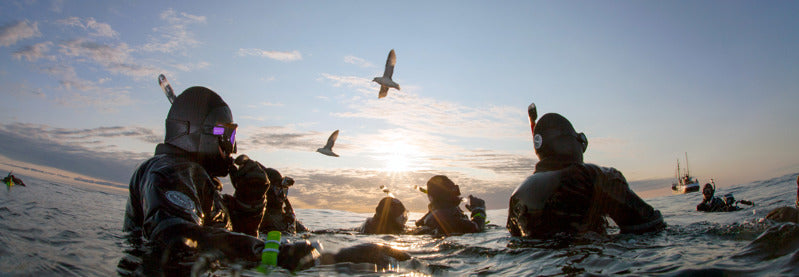
Dive In
Suunto Ambassador, pioneering cave diver, explorer and author Jill Heinerth talks about diving physiology in episode one of this four part series.
Can’t wait to watch the episodes? Click the links to dive right in!
Watch Episiode 1 now
Watch Epsiode 2 now
Watch Episode 3 now
Watch Episode 4 now
In this episode, Jill Heinerth discusses the basics of dive physics and physiology and how to better use your dive computers as an effective tool when planning, and executing dives.
Talking biological tissue and dive computers, Jill explains how the body reacts to the inert gas you breathe during a dive. When the body is subject to pressure from depth during a dive, it ‘on gasses’ as the inert gas dissolves into your tissues.
Our body tissues include the blood, the brain, ligaments, skin, bone, fat and all your organs and each tissue is delivered different amounts of blood, therefore absorbing different amounts of gas.
The rate in which tissues uptake and release the gas occurs differently for each group of tissues. The groups are sorted into different compartments alongside tissues that have similar gas saturation properties and behave in the same manner.
A dive computer allows the diver to view information that assists them on a dive, and the diver has the opportunity to decide to follow the device.
A dive computer will not, for the most, consider the individual differences of each diver using it. The "type" of diver that is considered is an average person, and there is an added safety margin to take into account to accommodate variations.
Your Suunto dive computer is based on mathematical models. This model, or algorithm, calculates the on gassing and off gassing of your compartments. The algorithm implemented at the core of a computer is a simulation of what happens to gases in a diver's body in an environment where pressure changes.
The research and development team at Suunto test, test and test again to ensure they meet the strictest performance targets. The dive team at Suunto are constantly improving and fine tuning the devices by diving with them over and over again, because we know you will too.
Check out episode one now and explore these topics further.
Episode 2
In episode two of Dive In, Jill Heinerth discusses how your dive commuter calculates ascents or decompression stops as we delve deeper into the basics of diving physics and physiology for both recreational divers, and those who dive beyond.
Having discussed how the human body stores and releases inert gas in the last episode, this week Jill examines how your dive computer calculates the maths that work out how the body gets rid of gas during off gassing, and how an ascent is just the beginning of the off-gassing process. Off gassing ends when the body has reached and found equilibrium with the surface.
When the body cannot take on any more gas into solution, it is termed- critical super saturation. This critical moment of reaching maximum pressure is known as the M value.
Different compartments mean lots of M values to consider in order to calculate how the body off gases when ascending during a dive.
Recreational divers will only consider the fast tissues. The time and depth parameters that recreational divers adhere to, keeps them away from nearing critical super saturation point. This is so they may directly ascend to the surface without a decompression stop.
Tech divers load both their fast and slower tissues, and this adds another layer of considerations. Sunnto has a team of dedicated researchers, engineers and testers who are constantly improving algorithms and have much real world dive data to use for their improvements.
Jill dives with Suunto, and says, “I have been diving with Suunto dive computers for over 20 years. Part of this is because I have seen the rigorous testing regiments, I’ve seen the manufacturing standards, as well as their active algorithm research and development. I’ve been to the factory, seen their testing and I know I can rely on their commitment to excellence.”
Find out why decompression models use up to 16 different theoretical tissue compartments and many more hot topics as Jill explains how your computer works in the second episode of Dive In.
Tune in next time for episode 3 to watch Jill get deep with personal factors and gradient factors.
Episode 3
Do you know what your Personal Factors are?
In a world where we are able to choose a product based on what is best suited for our individual needs, why would such a crucial piece of dive equipment, your dive computer, be any different?
Personal factors should not be over looked, yet many divers never read in to the dive computer manual deep enough to understand that their device can be tailored to suit an individual’s need. External influences can be taken into account and the dive computer conservatism setting can factor in risks for each dive. This is a very important part of safer dive planning.
During this episode of Dive In, we look at what the personal factors on a Suunto computer are, and how they need to be applied.
Jill also talks gradient factors, algorithms and dive teams. Few users, or even instructors actually understand how gradient factors work, or what they are. She shines a light on how different decompression models behave, and how dive buddies can work together even if they are diving following different decompression models.
Jill delves into what each number of the gradient factor represent, which one is more important and how to use them in your dive planning.
Jill also looks into the deep stop mystery. As divers we still have a lot of research to do into them, and over the years there has been much conflicting anecdotal advice. There is much misinformation buzzing around social media and dive forums leading to a vast amount of confusion.
Watch now as Jill Heinerth sets us straight on the key issues in this episode of Dive in.
Make sure you tune in next week for the fourth, the final and bonus episode where Jill shares her story of getting hit.
Episode 4
In the final instalment of Dive In, Suunto Ambassador Jill Heinerth discusses her experience of getting ’hit’ with Decompression Sickness (DCS) twenty years ago, what she has since learnt, and how she has adapted her dives to suit her.
Jill was thousands of dives into her career and thought it would never happen to her. DCS, or the bends, is a sports injury and there is a spectrum of how the bubbles can affect your body from a skin rash to paralysis.
In many cases the resulting tissue damage will remain, perhaps increasing the risk of another hit.
Making a few minor changes to her dive since her experience, watch to see how Jill optimises her off gassing phase on a dive and what surprises she has found by doing that little bit extra.
No mathematical algorithm can guarantee your absolute safety, and it is unfair to blame a device if you do get bent. Use your computer to the full and be armed with the knowledge of exactly how it works. Dive computers open up a whole wealth of new underwater adventures, so for one last time, let’s Dive In with Jill.
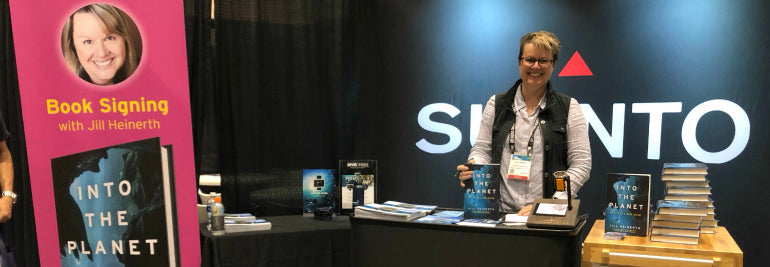
Jill Heinerth joins diving hall of fame
As a pioneering cave diver and explorer, documentary maker and author Jill Heinerth has educated and inspired people around the world about our incredible underwater world and the human impact on it. The International Scuba Diver Hall of Fame is an annual event that recognizes people who have significantly and positively impacted the industry through education, exploration, adventure and more. Founded by the Cayman Islands Ministry of Tourism in 2000, the award ceremony will take place in September 2020 in the Caymans.
During an announcement ceremony at DEMA Show, 2019, Jill spoke of what the award means to her.
“Such an amazing honor for a young woman who started her professional diving career in the Cayman Islands a long time ago. This is really fantastic at a time in my life that is very meaningful where I am just releasing my new book Into the Planet and a new documentary, Under Thin Ice. Thank you for this incredible honor! I look forward to visiting the Cayman Islands to accept it.”
There were three more nominees announced for the 2020 induction and they are Handicapped Scuba Association Founder Jim Gatacre, DEMA Executive Director Tom Ingram, and Undersea Hunter Group Founder Avi Klapfer.
Jill was at the Suunto booth this year signing copies of her incredible memoir, Into the Planet.
Released in August, Into the Planet is a thrilling insight into places inside the Earth you may not have imagined exist, but where Jill has dived. She bravely illustrates intense political issues and presents hard evidence about the impacted ice caps and beyond.
Her autobiography explores life-or-death decision-making in critical underwater situations, the pain and difficulty involved in recovering the dead bodies of her tragically lost friends from caves that no one else in the world has the ability, training, and mindset to access due to such extreme conditions.
Speaking at a Suunto function during DEMA Show, 2019, Jill talked about her memories, which are fascinating for both divers and non divers thanks to their important messages.
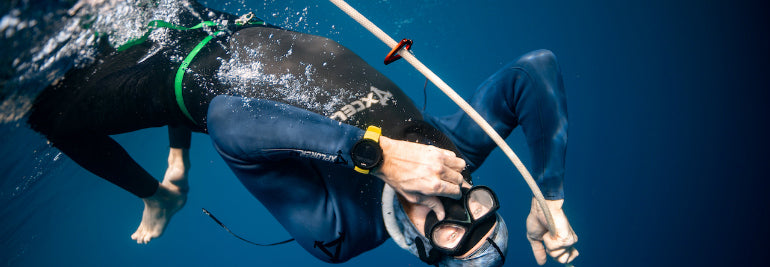
Experience the Blue Element freediving competition
Blue Element kicks off tomorrow for their 3rd event in Dominica. Suunto Dive caught up with one of the founders, Johnathan Sunnex, to find out what it is all about before media manager and freediver Francesca Koe takes over our Instagram feed tomorrow.
Photo by Daan Verhoeven
What is Blue Element?
Blue Element is an international freediving experience that encompasses multiple days of diving, beach clean-ups, island exploration and much more! It is held annually in the picture perfect island of Dominica! Sofia Gomez Uribe and I founded Blue Element freediving in 2016.
This is the third BE competition which was founded in 2016. Hurricane Maria prevented the 2017 edition, but last year the BE team were able to re-establish the event despite the country still being in recovery mode after the hurricane devastation.
The event is held in Soufriere Bay/Scotts Head in the very south of Dominica. Dominica is a small island nation, a part of the Lesser Antilles island chain in the Caribbean.
Why is the location so amazing?
The Soufriere Bay offers world class conditions year round, unlike any other location on earth. The water temperature ranges between 26-30°C, the visibility is between 20-30m and there are no waves, no currents and effectively no depth limit. To add to this, the bay is surrounded by high mountains carpeted with lush tropical jungles creating the perfect backdrop.
The custom built freediving platform is currently set in 160 m and just a five minute swim from shore.
Are you expecting any records?
The Blue Element team pride themselves in creating an atmosphere where athletes can perform at their very best. Dozens of national records and several world records have already been set here over the past four years and we expect this event to be no different!Blue Element 2019 will be attended by 30 athletes from around the world, including many national record holders, vice and world champions. We can expect to see many records fall at this event including national, continental and possibly world records.
What disciplines compete and on what days?
Athletes have the choice to compete in as many or as few of the competitive depth disciplines as they choose. There are six days of diving split into three sets of two. We are expecting 30 athletes to be competing this year and more than 150 official performances.
Have you seen the event grow?
Hurricane Maria was quite a setback and it took a lot to regain momentum. The event continues to grow each year and this year we will have almost three times the number of athletes than attended the inaugural competition.
Photograph by Daan Verhoeven
What can the athletes win?
Suunto D6i’s, Suunto D5’s, carbon blade Alchemy fins and shirts, custom made Elios wetsuits, Octopus nose prize packs, All-Swim swimwear, high end Pacsafe back packs made of recycled fishing nets, ADIDAS shirts, Recycled plastic Blue Element T-shirts, custom medals.
Who are the judges?
Two of the world’s leading judges, Carla Hansen and Vedran Milat.
Who runs the safety team?
Chief of Safety Louisa Collyns of the UK returns to lead our experienced team of safety divers. The safety team have been hand selected and are comprised of several 80-90m divers in their own right.
Will the rules be governed by AIDA or CMAS standards?
AIDA International.
Who is taking the official pictures?
Predominantly the man, the myth the legend, Daan Verhoeven. I will likely join him behind the camera for some session.
Will you have Dive Eye?
Not this year but the event will be covered by our professional media team with event videos and live streaming from the platform. We have cameras placed strategically to get all of the best angles from both above and below the surface! You will be able to catch the live stream from our Facebook page, and the videos will be uploaded to our social media channels. We will also be taking over the Suunto Dive Instagram feed live from the dive platform.
Photograph by Daan Verhoeven
What is your history in freediving?
I have been involved with freediving since 2011. I competed for the first time the same year in Kalamata for the Med Cup and then the AIDA World Championship. I placed somewhere in the middle of the field, but these events and the athletes who were in attendance inspired me to make a full commitment to freediving. I vowed to myself that when I would return I would be there for a podium placing.
I moved to Egypt and I started to teach and train full time. Living next to the ocean mean't I had easier access to depth which allowed me to progress quickly and I made my first dive below 100 m in November of 2012. The following year I returned to Kalamata for the AIDA Depth World Championship and, as I had hoped, this time I managed to place third in free immersion, winning a bronze medal. I ranked third overall for depth diving in 2012 and 2013 with deepest official results of 105 m CWT, 101 m FIM and 65 m CNF set in the Bahamas at Vertical Blue.
After the death of two friends (fellow freedivers) I switched my focus towards coaching and safety diving. I had thoughts about leaving the sport, but I soon realised that that wouldn’t change anything and that I would be better off staying and trying to make the sport safer. I ran safety seminars and returned to Long Island in the Bahamas, this time as the Chief of Safety and co-organiser. I hand selected a group of free divers that I knew would be up to the task of looking after the deepest divers in the world pushing their bodies to the absolute limit. I applied the same mindset to running the safety team to what I had used in my own personal training. We approached safety diving with performance in mind. Team bonding for cohesion, rescue drills and emergency training to sharpen our skills, incident reviews for learning opportunities and to strive for improvement. This approach has since been adopted by many other events and has set the standard for the international freediving community.
Since then, I have coached athletes to more than 70 national and continental records as well as seven world records. I am an instructor trainer with AIDA International and I continue to organise freediving events. I enjoy exploring and documenting the underwater world with my camera, and have dived in all continents, including both polar regions.
Will you compete?
Once the competition is underway and everything is running how it should, then yes, I plan to take off my organizers hat for a few minutes each day to perform some dives!
Photograph by Daan Verhoeven
Any hot tips or words of inspiration you would like to share?
Freediving, like life, is often a trial of tribulations. Success takes patience and persistence but inevitably hard work and determination pays off.
Links:
Photography by Daan Verhoeven
Blue Element Facebook
Blue Element Instagram
Blue Element Website
Why I Dive
A team of Suunto divers embarked on an epic journey to the remote islands of West Papua last year to explore the flourishing waters of Raja Ampat. They were amongst the first divers to experience the Suunto D5, and to shared jaw dropping video and images every diver dreams of seeing firsthand.
This marine environment there boasts the richest reefs in the world, and unsurprisingly entices divers from all over the globe to make the journey and discover this paradise for themselves.
Let's explore together!
Why I Dive, film by Janne Suhonen.
Photographer Steve Woods.














































































